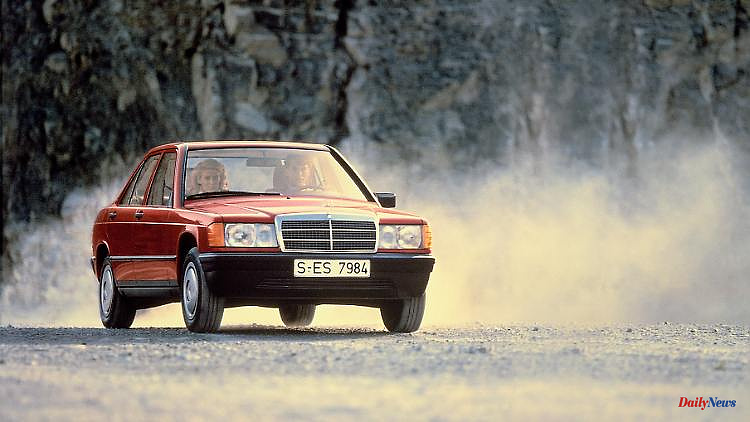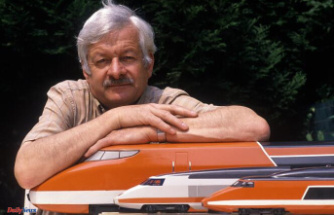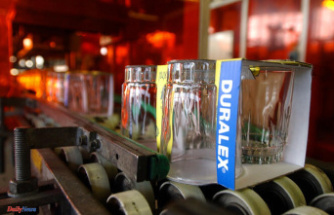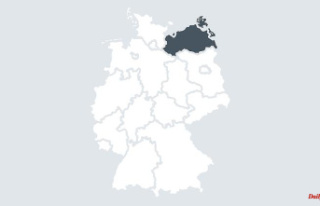S-class drivers feared that the star had fallen from the sky, the Americans mockingly called it "Baby Benz": The compact Mercedes 190 caused discussions in 1982 until it successfully attacked established competitors. And its diamond design soon characterized all Mercedes models.
This year, familiar worldviews tumbled, because little ones made great history. Helmut Kohl became the new chancellor in 1982 because the FDP wanted it. The little "E.T", extraterrestrial from Steven Spielberg's dream factory, turned a sci-fi fairy tale into the hitherto biggest cinema success and a compact Mercedes remeasured the firmament of the stars. This provocateur called himself the Mercedes-Benz 190 (W 201 series), and had already caused unrest among conservative Mercedes customers as the Erlkönig.
"Ushido" stood for camouflage as a type lettering on the pre-series vehicles, whose shrink format was reminiscent of an extraterrestrial. A good 30 centimeters shorter and 10 centimeters narrower than the previous 200 (W 123) basic Benz, the sedan even irritated the specialist media, which promptly spoke of the "Baby Benz". No prestige body, supposedly no taxi format, instead an aerodynamically simple design and outrageously sporty ambitions: was the 190 really still a real Mercedes?
Today we know that with the agile mid-range model 190, Mercedes not only successfully attacked dynamic cars like the BMW 3 Series and Audi A4. The Baby Benz also retained Swabian virtues such as premium prices, solidity and safety. The model was the W 126 S-Class developed at the same time. The 190 even met its extremely high safety standards.
Ironically, the smallest demanded the largest investment in the history of Mercedes: a good two billion marks, a new plant in Bremen and more than six years of development time cost the construction of the Mercedes 190, whose model code refers to the series of the same name (W 120) from the 1950s remembered. However, the larger E-Class later emerged from that pontoon classic of the economic boom.
In contrast, the W 201 series, the forerunner of today's C-Class, appealed to a new audience in the 1980s. What's more, this Benz discarded all Swabian fussiness and set trends, as until then only professional dynamics á la BMW 3 Series or Alfa Giulia/Giulietta. In keeping with aerobics, breakdancing and fast inline skating, the sports trends of the decade, the Mercedes 190 was good for adrenaline rushes, just as the target group of well-funded yuppies and dinks loved.
The 66 kW/90 hp four-cylinder carburetor version of the 190 was faster than the significantly more powerful and larger Mercedes 200, but also only just under 300 euros cheaper. The 90 kW/122 hp 190 E almost took on the 136 kW/185 hp 280 E, and the 190 E 2.3-16 and all the furious four-valve offshoots that followed blew in the direction of Munich as the first real four-door Mercedes racers.
Even ahead of the BMW M3 or Audi RS, the up to then stiff star carriers demonstrated the world record runs, DTM qualities and best times they burned into concrete and asphalt as wing and spoiler-decorated 16-valve engines. Be it as a 2.3-16 in 1983 in Nardò, Italy, with an average speed of almost 250 km/h over a distance of 25,000 kilometers, or in 1990 in the final expansion stage as a 2.5-16 Evolution with 173 kW/235 hp and driving performance at the level of a V12 BMW .
But the 190 also redefined the diesel - and thus ultimately qualified as a taxi despite the tightly cut body. The first diesel series vehicle with engine encapsulation was the 190 D with so-called whisper diesel, which BMW later countered with a six-cylinder diesel in the 3 Series. Sure, the diesel in the 190 mutated into a hit. In the final stage of expansion, the 190 D 2.5 Turbo was finally 195 km/h fast - no comparison to the 200 D (W 123), which made it to 135 km/h with difficulty and also consumed 25 percent more than a 190.
The W 201 series was also able to protect the environment, and did so earlier than many others. Diesel oxidation catalytic converters and three-way catalytic converters should help with petrol engines against the much-discussed acid rain of the 1980s and the dying forests. Even a battery-electric version of the Mercedes 190 was tested.
With the W 201 series, Mercedes reinvented itself as a result of the oil crises in the 1970s. Efficiency through weight reduction to 1080 kilograms (about 600 kilograms less than a current C-Class) as well as aerodynamics were on the agenda in Stuttgart and so the small 190 became an ambassador of a new design language that was to characterize all Mercedes in the future. "Diamond-cut design" is what Daimler's chief designer Bruno Sacco called the trapezoidal lines with the radiator grille integrated flush into the front end for the first time and puristic lines right through to the rear that was incredibly high at the time. The trapezoidal surfaces were intended to be reminiscent of the polished gemstone, and two years later the renewed E-Class (W 124) did indeed appear with diamond contours.
Amazing and unprecedented in a Mercedes sedan: Small refreshments with contemporary accessories such as the "Sacco boards" in a slightly different color on the flanks were enough to keep the 190 up-to-date beyond the end of production in 1993.
In fact, the C-Class forerunner found it difficult to switch to classic status. A quarter of a century after the market launch, 23,290 Mercedes 190s from the first two years of sales were still registered in Germany, while the competitors only managed 1 to 45 percent of this vehicle stock. In 2007, the 190 series was considered an almost indestructible long-distance runner and had such a timeless design that it briefly stimulated discussions about raising the minimum age for H license plate candidates.
That was unthinkable in 1982/83: the Mercedes salespeople initially had to do an unusual amount of persuading before potential customers could be persuaded to take a test drive. There they found: Except for the conventional handbrake lever instead of the foot parking brake, everything looked like Daimler, including a huge steering wheel, loving workmanship and standard bookkeeping equipment as well as endless options lists. Of course, it pinched taller people in the 190 rear more than in the W 123 models, but the smallest star carrier inspired by the much-vaunted "multi-link rear axle" and a new damper strut front axle.
When the specialist media in the mid-1980s made the Mazda 626 the first Japanese to win a comparison test against the new premium instance Mercedes 190, the Stern clientele was hardly interested. Because the baby had already made it, was one of the highest-volume Mercedes-Benz series in the world and made life more difficult for the BMW 3 Series and Audi 80/90 and A4. Just as the C-Class succeeds today, five generations and eleven million units later. Incidentally, these are also available in Asia as a state-supporting long version with a level of lounge comfort that was reserved for the S-Class in the days of Baby Benz.












